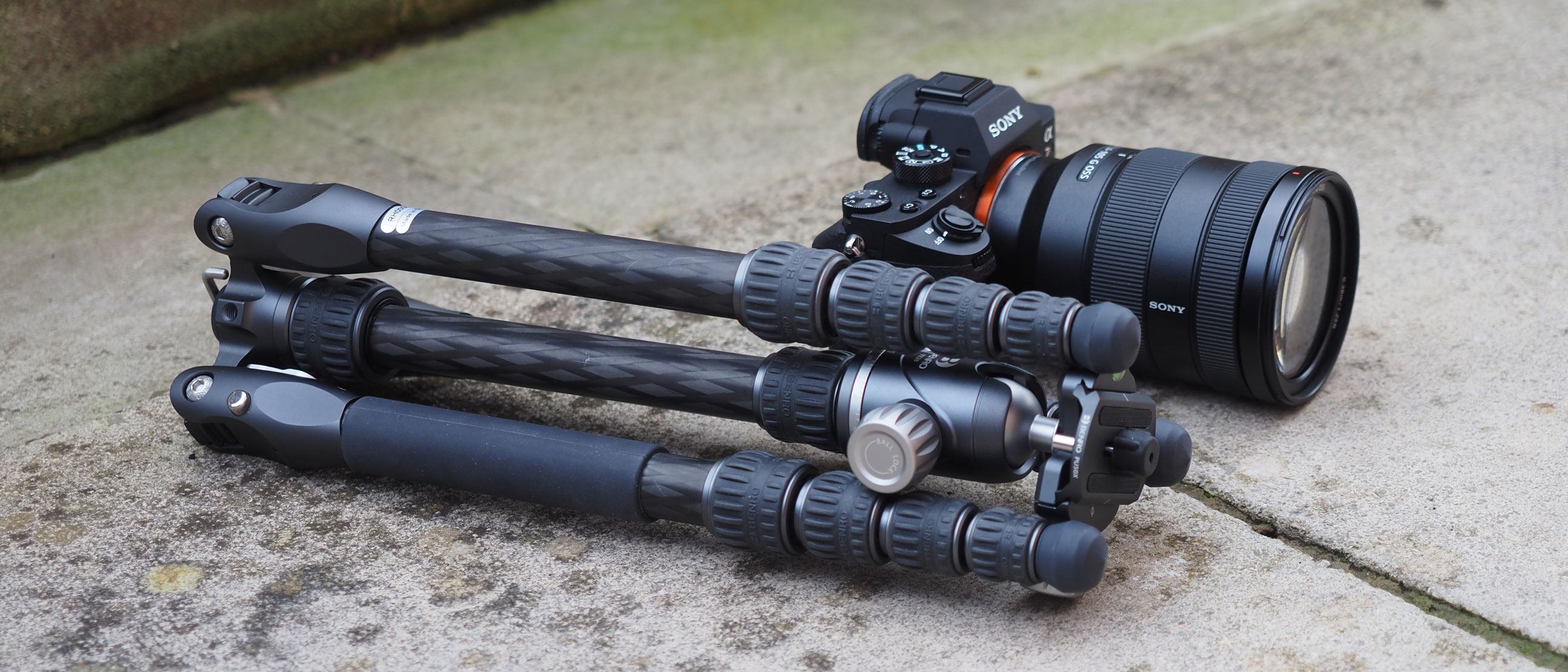Digital Camera World Verdict
This is the smallest of Benro’s four new Rhino travel tripods, but it’s remarkably stiff for such a compact tripod and Benro’s new VX ball heads and their secondary pan axis just under the camera plate are a triumph. Travel tripods have limitations – a lower working height and longer ‘unfolding’ time, but this goes with the territory and we can’t criticise the Benro for this.
Pros
- +
Just 350mm long when folded
- +
Good rigidity for size
- +
Clever VX ball head
Cons
- -
5-section legs – setup time
- -
Small pan axis knob
Why you can trust Digital Camera World
The Benro Rhino FRHN05CVX20 (or Rhino 05C with VX20 head) is the smallest of Benro's four new travel tripods. We've already reviewed the Benro Rhino FRHN34CVX30 (or Rhino 34C with VX30 head), which is the biggest of the four, and found it remarkably stiff for such a portable tripod. Does the 05C live up to the same standards?
Specifications
Leg sections: 5
Max Tube Diameter: 21.8mm
Min Tube Diameter: 9.0mm
Max Height With Column: 1395mm
Max Height No Column: 1080mm
Min Height: 350mm
Folded Height: 350mm
Weight: 1.24kg
Max payload: 10kg
Key features
The Rhino FRHN05CVX20 follows the now standard travel tripod design, where the legs fold up alongside the center column, which needs to be extended for packing and enclose the tripod head to produce a much more compact folded shape than a regular tripod.
The folded length is just 350mm, which has been made possible with the use of 5-section legs. The center column itself has two sections, so even though the maximum height without the center column extended is pretty modest at just over 1m, at full extension it can reach almost 1.4m.
The VX ball head deserves a special mention because it has two pan axes, not one. The first is in the usual place at the base of the ball mechanism, but the second is directly below the camera mounting plate. The idea is that you can level the ball head using the spirt level bubbles, and then pan the camera for video or panoramic ‘stitchers’ the secondary pan mechanism, which is now level.
The overall design is the same across the Rhino range, right up to the Benro Rhino FRHN34CVX30 which we’ve already reviewed.
Build and handling
The materials, the leg clamps, the leg angle adjusters and the column extension clamps all feel first rate. Benro’s carbon fiber tubes have a soft, ‘satin’ finish which feels really satisfying to handle, and the leg and column clamps grip firmly.
The best camera deals, reviews, product advice, and unmissable photography news, direct to your inbox!
The VX ball head is excellent. At first, its spring-loaded locking knob takes a little getting used to – you turn it to unlock it, then pull it against a spring and turn it some more to release the camera plate fully – but once you understand the principle it’s a really great system.
There’s a butterfly nut to lock the camera on to the plate, so you don’t have to go fishing around in your pocket for a coin to fit a coin slot, and although smaller than the VX30 head on the largest Rhino tripod, this one has the same quality feel and operation.
There is wasted space between the tripod legs and center column when folded – the Peak Design Travel Tripod is the only tripod we’ve used that addresses this.
Performance
Five-section legs and a double-extension center column don’t sound like a recipe for rigidity, but as long as you’re sensible, the Benro Rhino FRHN05CVX20 is remarkably rigid for a tripod of this size.
As with any tripod the trick is to use the full leg extension before using any column extension. If you do that, the Benro is remarkably rigid. Use one column extension and it’s still surprisingly good; use both and it starts to get more wobbly.
This will always be the case with super-compact travel tripod designs, and to its credit the Benro Rhino FRHN05CVX20 is much more rigid in these situations than other same-sized travel tripods we’ve tried.
Verdict

Travel tripods always bring compromises, and the small the folded size, the greater the compromise. The Benro Rhino FRHN05CVX20 holds up surprisingly well, however. The ‘reversed’ folded configuration and five section legs inevitably mean it takes a few moments more to set up compared to a regular tripod, but as long as you’re prepared to shoot at waist or chest height, this tripod will give you a remarkably stable base for a compact camera, mirrorless camera and even a fairly chunky DSLR/lens combination.
Read more:
• Best tripod for photography
• Best carbon fiber tripod
• Best travel tripod
• Best mini tripod
• Best tripod for video

Rod is an independent photography journalist and editor, and a long-standing Digital Camera World contributor, having previously worked as DCW's Group Reviews editor. Before that he has been technique editor on N-Photo, Head of Testing for the photography division and Camera Channel editor on TechRadar, as well as contributing to many other publications. He has been writing about photography technique, photo editing and digital cameras since they first appeared, and before that began his career writing about film photography. He has used and reviewed practically every interchangeable lens camera launched in the past 20 years, from entry-level DSLRs to medium format cameras, together with lenses, tripods, gimbals, light meters, camera bags and more. Rod has his own camera gear blog at fotovolo.com but also writes about photo-editing applications and techniques at lifeafterphotoshop.com






